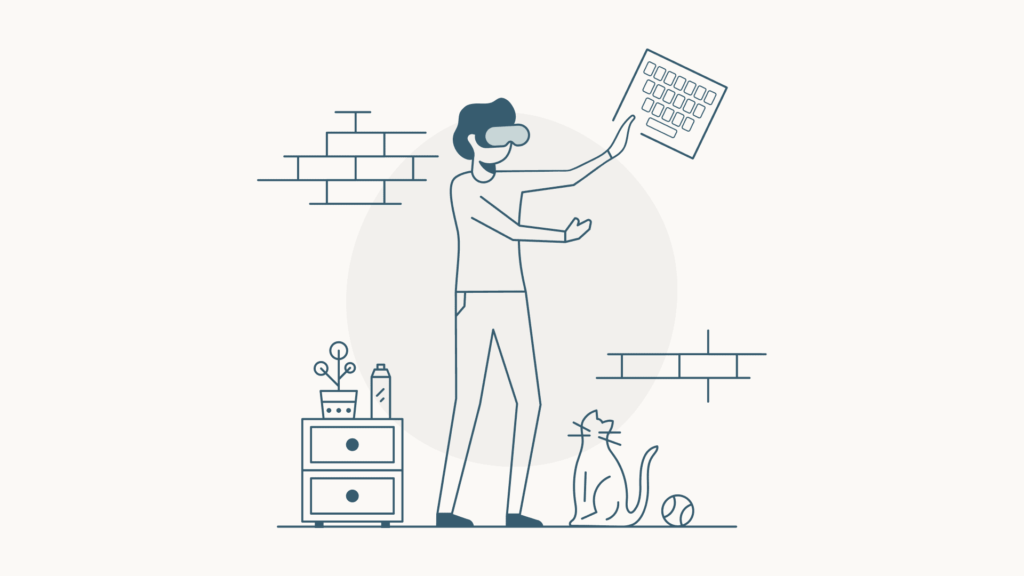Table of Contents

If recent rumors are to be believed, we won’t be typing on physical, tactile keyboards pretty soon. Instead of clunky keyboard technology, we could be interfacing with glass tablets, laser formats, and even platforms that turn anything into a typing machine! Here are the three virtual typing trends that could be the next big thing in keyboard technology:
Mac’s All-Glass Typing Display
Apple has been granted multiple patents for a keyboard that could be used with a virtual reality headset. The headset would provide haptic feedback to the user, simulating the feeling of typing on a physical keyboard. They’ve tried it with the 2020 Apple MacBook Pro with touch bars, so it’s interesting to see what a full-fledged version of it would look and feel like.
The company has also been working on a keyboard that could change shape so that the virtual keys would feel more authentic and similar to regular keycaps. Because of the issues with their butterfly keyboard, Apple has been researching this concept for a while now.
Virtual Laser Keyboard Technology
Ever seen someone using a virtual laser keyboard and wondered how it works? These keyboards use an infrared laser to project a keyboard onto a flat surface, which can then be used to type like a regular keyboard.
The infrared laser is captured by a camera, which then translates the keyboard image into keystrokes sent to the computer. These devices are becoming increasingly popular as they offer a more compact and portable alternative to traditional keyboard and mouse setups.
When you’re ready to use the virtual laser keyboard, you’ll need to power it up and connect it to your device. The keyboard will then project a keyboard onto any flat surface. You can then use the laser keyboard just as you would a regular keyboard.
For proper projection and typing, virtual laser keyboards require flat, opaque, and non-reflective surfaces. Once the keyboard is set up on the right surface, the device displays a full-size QWERTY keyboard, typically containing 60 or more keys. Then, you type like on a normal keyboard, although the sensation you typically feel when typing on a laptop or desktop won’t be there: the usual pops and clicks of the keystrokes punching up and down. It takes a little practice for many users to become accustomed to pressing their fingers on a smooth surface.
However, while virtual laser keyboards are small and convenient to carry around, you can’t simply pull one out and start typing away in any location. If you were sitting on the bus, for instance, and wanted to write a quick email on your BlackBerry, you couldn’t shine the device’s red laser onto your lap and expect it to work properly.
Type Anywhere with Tap
Typers can address their concerns with projection keyboards by using Tap instead. The Tap Strap is a device that helps you interface with any Bluetooth-enabled device without using your hands. It is made of a soft, flexible fabric that is comfortable to wear and has an advanced sensing system. Each tap sends a command or keystroke to a device based on which fingers touched the surface. It’s interesting to see innovation in text input but the question is about whether you have the patience to learn something else than the good old QWERTY keyboard layout you’re using everyday.
The Future of Keyboard Technology Is Now with Fleksy
Access forward-thinking keyboard technology with Fleksy today. We’re a white-label keyboard SDK that enables you to create unimaginable products. Get in touch with our team or visit our Developer Platform today!